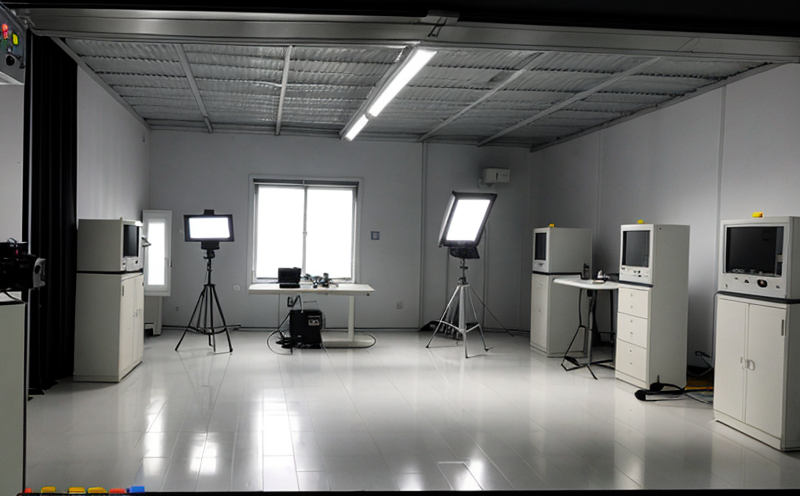EN 60598 Photometric Testing of Luminaires Safety and Performance
The European standard EN 60598 provides comprehensive guidelines for the performance, safety, and efficiency testing of luminaires. This stringent regulation is essential in ensuring that all lighting products comply with strict electrical and mechanical safety requirements while delivering reliable illumination.
Photometric testing under EN 60598 focuses on quantifying the light output of a luminaire from various angles and distances to determine its performance characteristics. The primary objective is to validate compliance with both regulatory requirements and industry standards, which directly impacts the quality and safety of products used in diverse applications.
During photometric testing, the luminaires are subjected to controlled conditions that simulate real-world usage scenarios. This process involves measuring light intensity (candela), total lumens, uniformity ratios, color rendering indices (CRI), and other parameters critical for evaluating a luminaire's performance. Compliance with these criteria ensures that the product meets safety standards set forth by regulatory bodies like IEC and EN.
The importance of photometric testing cannot be overstated in industries where lighting plays a crucial role, such as automotive, aviation, and architecture. In these sectors, precise control over light distribution is paramount for enhancing visibility, reducing glare, and optimizing energy consumption. The accuracy of the test results derived from EN 60598 ensures that manufacturers can confidently release products that are not only safe but also efficient and reliable.
Compliance with EN 60598 is mandatory for all luminaires sold in Europe, making it a key factor in product development cycles. Rigorous testing at various stages of production helps identify potential issues early on, thereby minimizing costly rework and delays during certification processes. For quality managers, this translates into higher standards of product integrity and enhanced customer satisfaction.
Photometric testing also plays an integral role in the R&D phase by providing insights into how different design changes affect overall performance. Engineers can use these data points to fine-tune their designs based on empirical evidence rather than guesswork, leading to more innovative solutions that meet market demands while adhering to regulatory expectations.
In conclusion, EN 60598 photometric testing is vital for ensuring the safety and efficacy of lighting products. By adhering strictly to this standard, manufacturers can produce reliable, safe, and high-performing luminaires that stand out in competitive markets. This commitment not only protects consumers but also fosters trust within regulatory agencies.
Why Choose This Test
Selecting EN 60598 photometric testing for your luminaires offers numerous advantages that go beyond mere compliance. Here are some compelling reasons why choosing this test is beneficial:
Comprehensive Compliance Assurance: Ensuring full adherence to international standards enhances the credibility and reputation of your brand globally.
Enhanced Safety Features: By meeting stringent safety requirements, you protect users from potential hazards associated with improper lighting design or malfunctioning components.
Improved Product Performance: Through detailed photometric analysis, subtle improvements can be made to enhance light distribution, reduce energy consumption, and increase longevity of the product.
Market Leadership Position: Meeting these benchmarks sets a benchmark that distinguishes your offerings from competitors, making them more attractive to discerning buyers seeking premium quality products.
Customer Satisfaction Boost: Providing reliable performance and safety guarantees fosters long-term relationships with customers who appreciate the value added by compliant products.
Competitive Edge: Compliance with international standards provides a competitive edge in both domestic and export markets, enabling smoother entry into new territories without facing regulatory barriers.
Quality and Reliability Assurance
The process of photometric testing under EN 60598 involves meticulous preparation and execution to ensure accurate results. The specimen, typically a luminaire, undergoes rigorous examination using specialized equipment designed specifically for measuring light intensity across multiple angles.
Before testing begins, the luminaire must be thoroughly cleaned and prepared according to standard procedures outlined in EN 60598. This includes checking for any external damage or defects that could affect test outcomes. Once ready, the device is placed within a calibrated photometer chamber where it emits light onto sensors positioned at specific points.
The resulting data provides detailed information about how much light is emitted in different directions and at various intensities. This comprehensive dataset allows for thorough evaluation of both safety aspects like electromagnetic interference (EMI) and performance metrics such as color temperature, correlated color temperatures (CCT), and CRI values.
Use Cases and Application Examples
| Application Area | Description of Use Case | Key Considerations During Testing |
|---|---|---|
| Automotive Exterior Lighting | Ensuring proper visibility during nighttime driving by testing light distribution patterns around the vehicle. | Focus on glare reduction, high beam vs low beam ratio, and overall brightness levels. |
| Aerospace Cockpit Lighting | Evaluating critical lighting conditions inside aircraft cockpits to maintain situational awareness. | Highlight importance of minimal glare and accurate color rendering for safe navigation. |
| Architectural Lighting Design | Demonstrating how architectural lights interact with interior spaces, providing aesthetic appeal alongside functionality. | Emphasize uniformity indices and CRI values to achieve optimal visual comfort. |
| Sports Venue Illumination | Guaranteeing adequate illumination levels for athletes while minimizing discomfort caused by direct exposure. | Assess light distribution over playing fields, focusing on uniformity and spillage control. |
| Industrial Lighting Systems | Maintaining visibility in challenging environments where regular lighting might be insufficient. | Concentrate on color temperature stability and minimal flicker to prevent worker fatigue. |
| Hospital Room Lighting | Sustaining patient comfort through appropriate light levels that neither disturb nor hinder sleep cycles. | Prioritize color rendering indices (CRI) ensuring accurate perception of colors within medical settings. |





